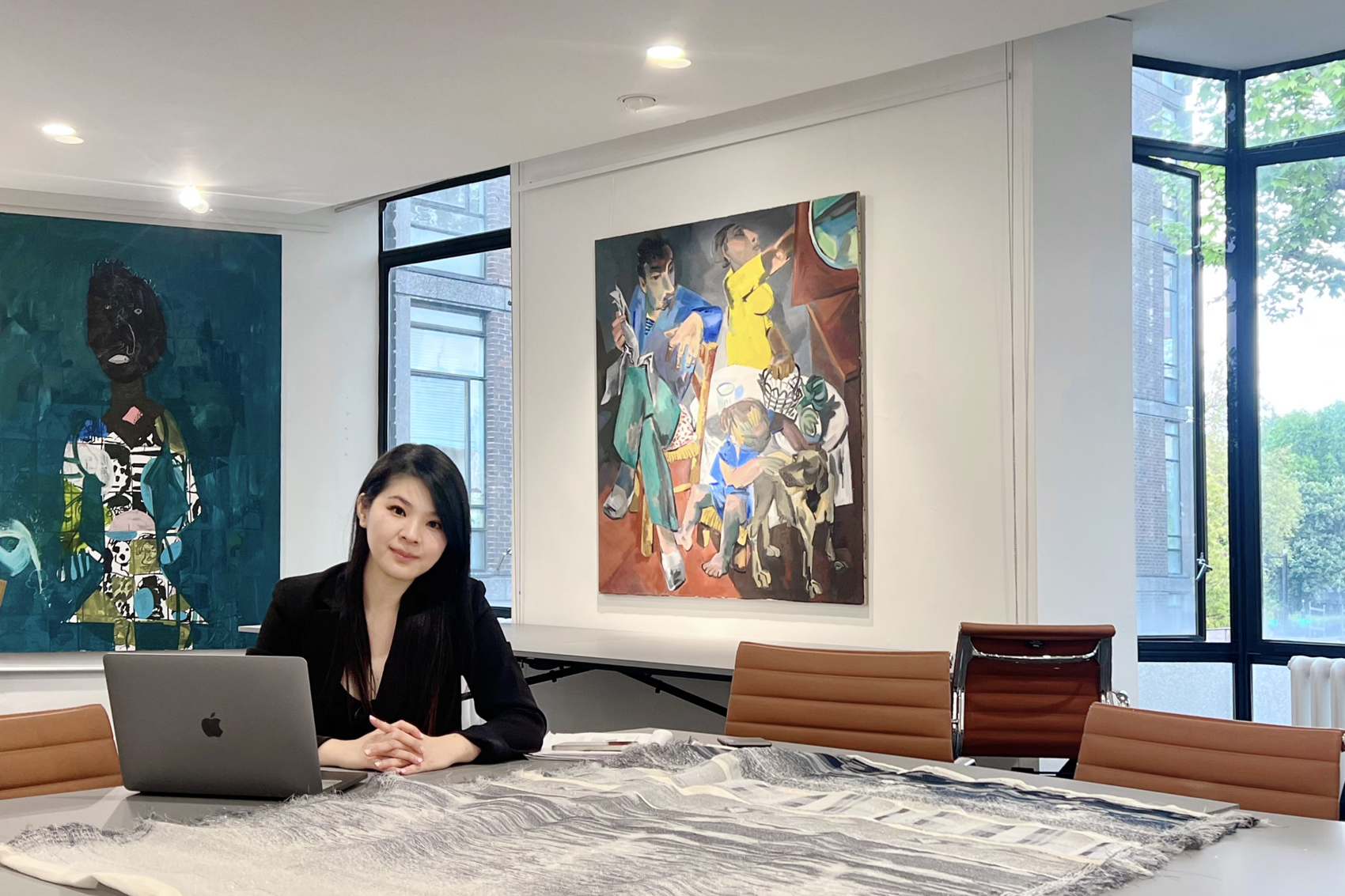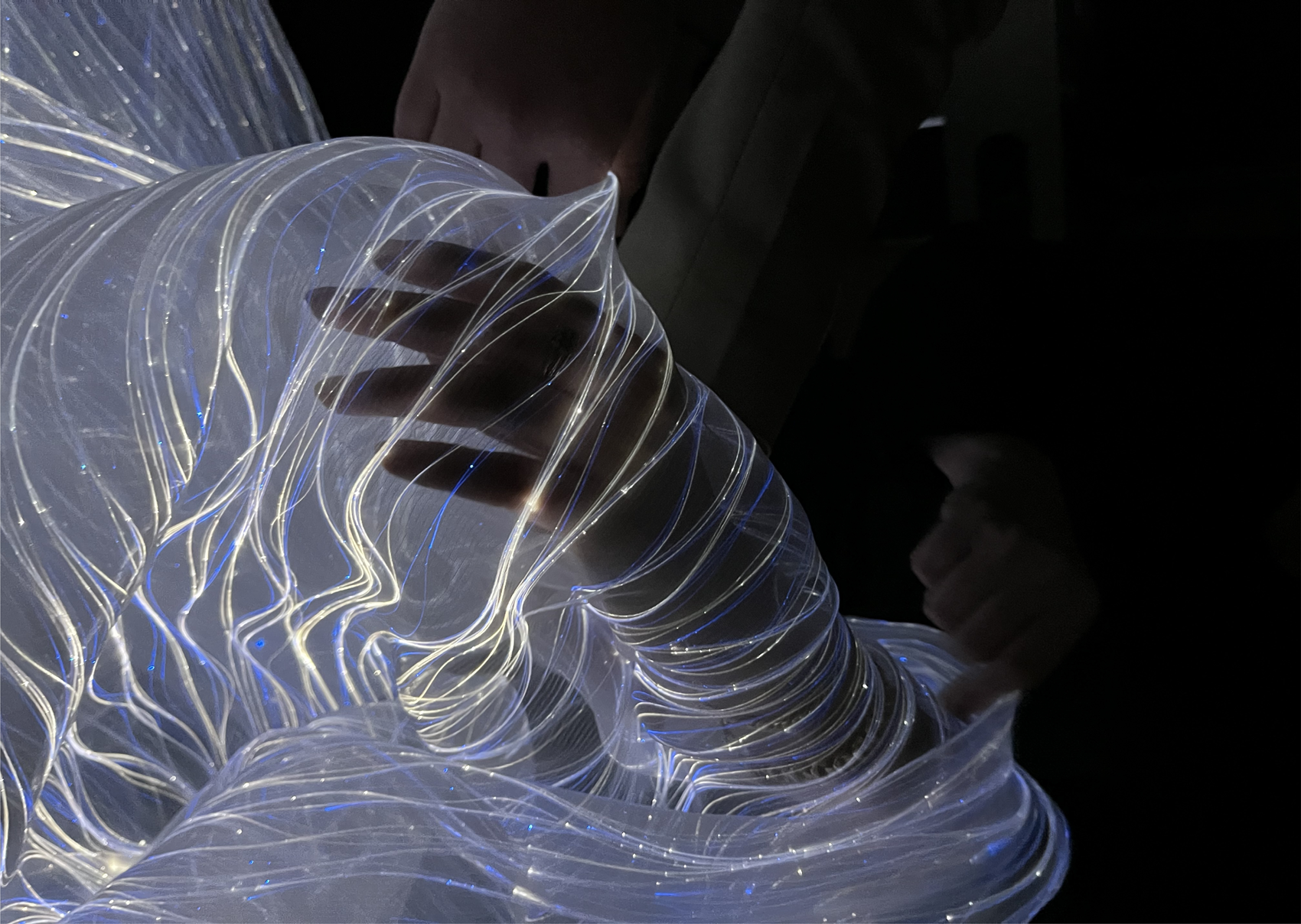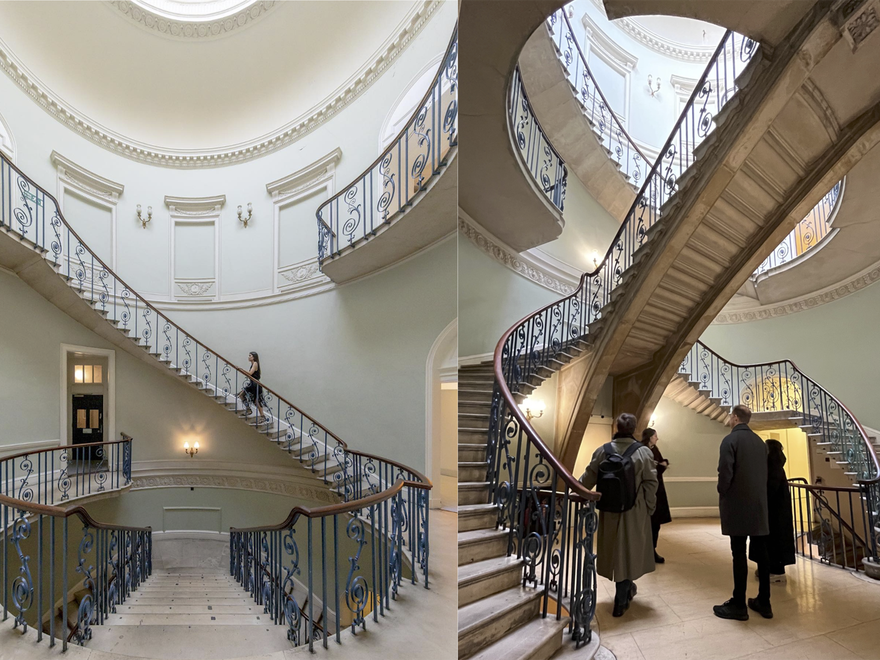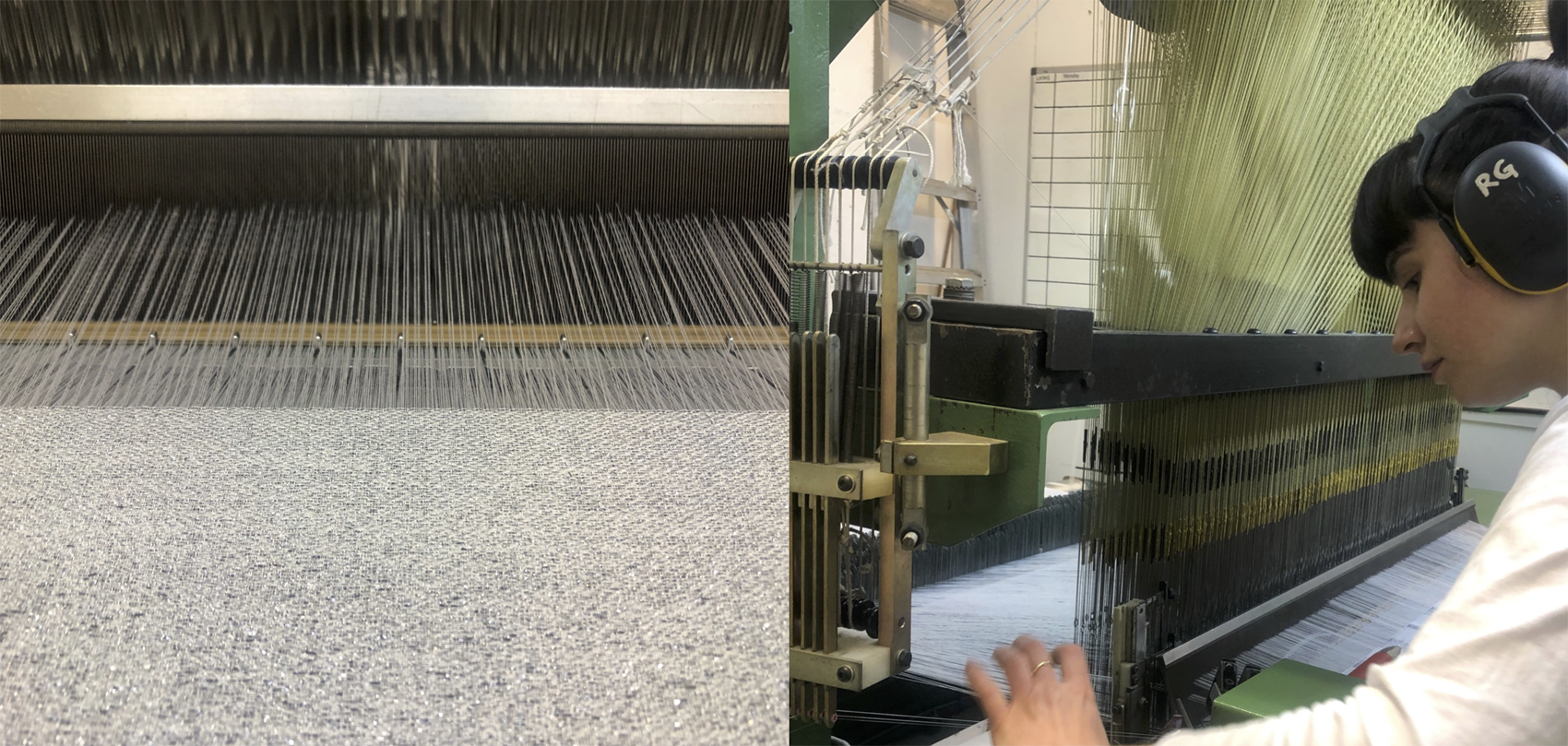
Key details
Date
- 19 May 2023
Author
- RCA
Read time
- 4 minutes
Inner Peace is an interactive art and music installation from our MA Textiles student Amelia Peng in collaboration with music composers of the Royal College of Music, Foster + Partners’ Specialist Modelling Group and Italian Textile Weavers. The installation will be part of the London Design Biennale exhibition at Somerset House opening on 1 June.
We spoke to Amelia about her ambitions for the project and why bringing together a cross-disciplinary team was important to explore the connections between textiles and mental health.

Where are you from, and what brought you to the MA Textiles at the RCA?
I'm from Taipei in Taiwan. I have fifteen years of experience in textile design and global supply chain management for leading brands in the fashion industry. But my learning journey at the RCA has been a great turning point for me, allowing me to explore new possibilities for the future of textiles, merging the perspectives of art, design and innovation.
How would you sum up your creative process in one sentence?
Empathy, Equality and Entrepreneurship.
“My learning journey at the RCA has been a great turning point for me.”
What’s it been like preparing for the London Design Biennale 2023?
It was an unexpected opportunity when I received the invitation during term two. But it was an honour to have our pavilion selected by the Director of the Biennale, Victoria Broackes. And it was great to collaborate with fellow RCA students, composers from the Royal College of Music and the Forster+Partners team.
With only four months ahead as project curator and designer, I faced the challenge of establishing an effective design-to-development process requiring meticulous planning. Behind this endeavour lies a tapestry of stories about collaboration between students and industry professionals.

‘Music-Mind-Textile’ brings together partners from the RCA and beyond, working across music, architecture and textiles as well as neuroscientists. How did this collaboration come about?
Music and textiles are both passions of mine. And as an artist and a human being, I often find myself pondering questions like ‘Why do we exist?’ To help me with these questions, I often seek the expertise of professors, technicians, experts in data science, medical doctors, neuroscientists, and art therapists.
It takes courage to collaborate with experts in unfamiliar fields. Our perspectives are shaped by our past experiences, predictions, and assumptions, which can make it challenging to align our egos as a team. However it is through collaboration that my knowledge expands. This is why I, as an individual, initiated this project, bringing together people from diverse nationalities to work towards a common goal.

Why did you choose the Nelson Stair in Somerset House as the location for the pavilion?
This historic staircase, initially designed by Sir William Chambers, endured destruction during WWII before being restored to its former glory by Sir Alfred Richardson in 1950. The profound symbolism of human resilience embodied by the Nelson Stair resonated deeply with our project's core concept.
Collectively, we named our pavilion ‘Inner Peace’ recognising it as the most pressing and essential human need in today's digital age, particularly considering the challenges posed by the pandemic, economic instability and ongoing crises.
How do you think visitors will approach the work when they enter the room?
The waterfall-like installation serves as a profound symbol of purifying our minds and souls. We hope visitors will encounter harmonious sound, visuals and textiles in an immersive and interactive experience. Enabling audiences to ‘see colour in music’ and discover inner peace amidst darkness. The multisensory taps into deep emotions and intuition, transcending the limitations of language.

Nelson Stair at Somerset House
‘Music-Mind-Textile’ focuses on mental health and centres feelings of shelter and co-existence. Why is it important to use art and design to explore these themes?
Empathic design thinking emerges from the inherent nature of textiles, which have long served as a means of covering and protecting the body. While art and music, functioning as therapeutic mediums, possessing the power heal and inspire.
I think artistic work serves as an outlet for emotional expression, allowing us to engage privately and individually. This art installation facilitates such engagement, providing a space for personal exploration and introspection.

“I am captivated by the atmosphere of freedom and creativity that permeates the RCA.”
MA Textiles
How has being at the RCA influenced you and your practice?
The RCA provides a nurturing and inclusive environment that encourages students to explore their true selves. Within this esteemed institution, I have witnessed the dedication and commitment of my fellow students, which has deeply moved me.
The college, in its essence, is a haven for personal and academic growth, where students are encouraged to embrace failure and take risks without fear. I am captivated by the atmosphere of freedom and creativity that permeates the RCA.

What impact have the programme staff had on your practice?
I am grateful for the unwavering support and guidance offered by Professor Anne Toomey and Dr Elif Ozden Yenigun. Their understanding and open-minded guidance have been pivotal in shaping my growth as an artist. Their support has not only nurtured my academic development but has also empowered me to embrace my artistic vision and true aspirations. The words of empowerment from Anne: 'No one can stop you' have served as a constant source of strength.
The impact of the Design360 course led by Dr Nick de Leon has also been profound. The course and its insightful guest speakers has provided invaluable perspectives on sustainability, economics and global insights. Bridging the gap between design work and its broader implications for sustainable development.
How have the facilities at the RCA helped you develop your work?
The intersection of technical practice, art and smart-textiles manufacturing presents a fascinating juxtaposition. Throughout my journey, I have delved into the use of the digital jacquard machine in the RCA textile studio, working alongside my instructor Rosie Green.
I have also had the opportunity to witness the manufacturing process in Milan and collaborate closely with Italian weavers. It was a challenging yet rewarding experience to bridge the gap between artistic expression and technological innovation in the realm of smart textiles.
The well-equipped Sound Studios at Kensington and White City have offered invaluable resources and the guidance of knowledgeable technical instructors Joe Hirst and Dimitris Menexopoulos.

RCA Sound Studio
What is the best thing about studying in London?
One of the most remarkable aspects of being in London is the sense of endless possibilities it offers. Many individuals come to this vibrant city to embark on a new chapter in their lives, and as a learner, I am filled with joy at the prospect of exploring new horizons. It is incredible to reflect on the fact that within a mere eight months, we have made significant progress on this project, which serves as a personal record of my journey and experiences in London.